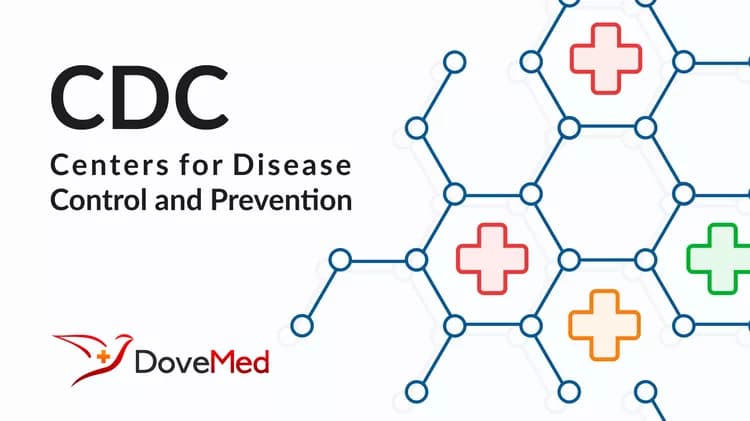
CDC: Action Needed Now To Halt Spread Of Deadly Bacteria
CDC: Action needed now to halt spread of deadly bacteria
Data show more inpatients suffering infections from bacteria resistant to all or nearly all antibiotics
A family of bacteria has become increasingly resistant to last-resort antibiotics during the past decade, and more hospitalized patients are getting lethal infections that, in some cases, are impossible to cure. The findings, published today in the Centers for Disease Control and Prevention’s Vital Signs report, are a call to action for the entire health care community to work urgently – individually, regionally and nationally – to protect patients. During just the first half of 2012, almost 200 hospitals and long-term acute care facilities treated at least one patient infected with these bacteria.  Â
The bacteria, Carbapenem-Resistant Enterobacteriaceae (CRE), kill up to half of patients who get bloodstream infections from them. In addition to spreading among patients, often on the hands of health care personnel, CRE bacteria can transfer their resistance to other bacteria within their family. This type of spread can create additional life-threatening infections for patients in hospitals and potentially for otherwise healthy people. Currently, almost all CRE infections occur in people receiving significant medical care in hospitals, long-term acute care facilities, or nursing homes.
“CRE are nightmare bacteria. Our strongest antibiotics don’t work and patients are left with potentially untreatable infections,” said CDC Director Tom Frieden, M.D., M.P.H. “Doctors, hospital leaders, and public health, must work together now to implement CDC’s “detect and protect” strategy and stop these infections from spreading.”
Enterobacteriaceae are a family of more than 70 bacteria including Klebsiella pneumoniae and E. coli that normally live in the digestive system. Over time, some of these bacteria have become resistant to a group of antibiotics known as carbapenems, often referred to as last-resort antibiotics. During the last decade, CDC has tracked one type of CRE from a single health care facility to health care facilities in at least 42 states. In some medical facilities, these bacteria already pose a routine challenge to health care professionals.Â
The Vital Signs report describes that although CRE bacteria are not yet common nationally, the percentage of Enterobacteriaceae that are CRE increased by fourfold in the past decade. Â One type of CRE, a resistant form of Klebsiella pneumoniae, has shown a sevenfold increase in the last decade. Â In the U.S., northeastern states report the most cases of CRE.
According to the report, during the first half of 2012, four percent of hospitals treated a patient with a CRE infection. About 18 percent of long-term acute care facilities treated a patient with a CRE infection during that time.
In 2012, CDC released a concise, practical CRE prevention toolkit with in-depth recommendations for hospitals, long-term acute care facilities, nursing homes and health departments. Key recommendations include:
enforcing use of infection control precautions (standard and contact precautions)
grouping patients with CRE together
dedicating staff, rooms and equipment to the care of patients with CRE, whenever possible
having facilities alert each other when patients with CRE transfer back and forth
asking patients whether they have recently received care somewhere else (including another country)
using antibiotics wisely
In addition, CDC recommends screening patients in certain scenarios to determine if they are carrying CRE. Because of the way CRE can be carried by patients from one health care setting to another, facilities are encouraged to work together regionally to implement CRE prevention programs.
These core prevention measures are critical and can significantly reduce the problem today and for the future. In addition, continued investment into research and technology, such as a testing approach called Advanced Molecular Detection (AMD), is critical to further prevent and more quickly identify CRE.
In some parts of the world, CRE appear to be more common, and evidence shows they can be controlled. Israel recently employed a coordinated effort in its 27 hospitals and dropped CRE rates by more than 70 percent. Several facilities and states in the U.S. have also seen similar reductions.Â
“We have seen in outbreak after outbreak that when facilities and regions follow CDC’s prevention guidelines, CRE can be controlled and even stopped,” said Michael Bell, M.D., acting director of CDC’s Division of Healthcare Quality Promotion. “As trusted health care providers, it is our responsibility to prevent further spread of these deadly bacteria.”
Vital Signs is a CDC report that appears on the first Tuesday of the month as part of the CDC journal Morbidity and Mortality Weekly Report, or MMWR. The report provides the latest data and information on key health indicators. These are cancer prevention, obesity, tobacco use, motor vehicle passenger safety, prescription drug overdose, HIV/AIDS, alcohol use, health care–associated infections, cardiovascular health, teen pregnancy, food safety and viral hepatitis.
CDC works 24/7 saving lives, protecting people from health threats, and saving money to have a more secure nation. Whether these threats are chronic or acute, manmade or natural, human error or deliberate attack, global or domestic, CDC is the U.S. health protection agency.
###
U.S. DEPARTMENT OF HEALTH AND HUMAN SERVICES
Related Articles
Test Your Knowledge
Asked by users
Related Centers
Related Specialties
Related Physicians
Related Procedures
Related Resources
Join DoveHubs
and connect with fellow professionals

0 Comments
Please log in to post a comment.